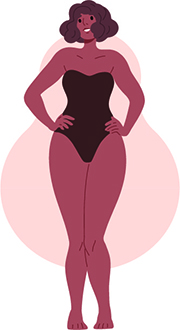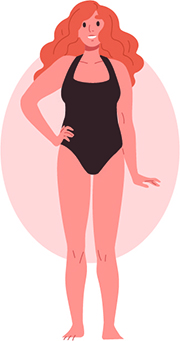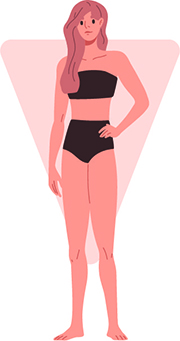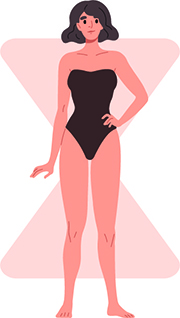International sewing patterns
International
sewing patterns
No language barrier · 9.500 patterns from 37 countries · incl. translation help
No language barrier · incl. translation help
9.500 patterns from 37 countries
Velvet and Cordury
Today, velvet fabrics are mostly made of cotton while earlier in the days velvet was always made of silk. The history of velvet is connected with the one of silk. It started with a fabric called 'Samit' which is a six-threaded and patterned fabric made of silk, but without pile. Since the 14th century silk velvet has been produced in Italy. Italy (especially the cities of Milan, Genoa, Florence and Venice) remained the largest producer of velvet for a long time before velvet was also produced in France and England. In 1605 Claude Dangon invented a method by which velvet fabric could now also be produced in patterns. Since the late Middle Ages, velvet fabric has been very popular in Europe. However, the fabric was always reserved for the nobility and the rest of the population could not afford the expensive fabric. During the Renaissance, the luxurious fabric was one of the most popular fabrics. Due to the coziness and elegance of the fabric, velvet fabric used to be a popular fashion fabric not only for robes and coats but also as upholstery fabric, for pillows, blankets or curtains in the unheated rooms of castles and palaces.
Red velvet is often still associated with royalty, luxury and elegance. Nowadays there are also special types of velvet, such as corduroy. This type of velvet is very durable and can be recognized by the ribs in the surface of the fabric which can have different widths. Corduroy is usually made of cotton and used to be mainly produced in Manchester. Therefore, pants made of this fabric were known as Manchester pants for a long time.
In addition, there are also stretch velvet and panne velvet which are however knitted and not woven fabrics. These types oh velvet also have a slight elasticity. Panne velvet is additionally ironed or pressed at the end of production which is called panning. In addition, there is an imitation of the normal velvet fabric, the flock velvet in which fiber flocks are glued to the base and not woven in. Flock velvet is cheaper, but also of lower quality than true velvet because if the fiber flakes are not well glued, they may fall off the fabric over time.
Properties of velvet fabric
Velvet is very soft and known for its pleasant feel as it's made out of natural fibers. Moreover, the fabric it has a really elegant look. It is also wrinkle resistant. Therefore, velvet fabric is well suited as upholstery fabric. Velvet makes great curtains as it's noice and light resistant. Moreover, it even has a partial insulating effect against cold. Cotton velvet is more dull and noble and is more expensive than panne velvet or stretch velvet. This is due to the complex production. Panne velvet is made of polyester and has a shiny surface which is why sometimes it's called mirror velvet. The shine is created by ironing and pressing the fabric. Because of the pile on the surface, the fabric appears shiny in one direction and matte in the other. The direction of a velvet fabric can be easily felt by hand. If you run your hand over the fabric and you feel a slight resistance, you are going against the grain. Without resistance, therefore, with the stroke. Special stretch velvet is additionally elastic and the fabric is therefore well suited for comfy clothes.
Care tips for velvet
Unfortunately, velvet is not very easy to care for and should be washed as rarely as possible. Be especially careful with silk velvet! If it needs to be washed, it is best to do so only with a mild hand wash. Often, stains from the velvet fabric can also be simply brushed off. If your fabric has strong stains it is recommended to take the fabric to the dry cleaners. Panne velvet is easier to care for, as it is usually made of polyester so you can wash it at 30°C in the machine. However, velvet should not be machine dried and ironed only at low heat and inside out. It is recommended not to fold the velvet fabric, but to roll it, so that no creases are being build in the fabric.
Use and processing of velvet fabric
Velvet fabric is widely applied both in the decorative field and for clothing. There are plain velvet fabrics and also ones with great patterns. Soft fabrics like these are suitable for use as upholstery fabrics, bedding, and throw blankets. Sofas can be covered with velvets too. The velvet fabric immediately makes any room look more noble. When it comes to fashion the fabric is suited best for rather warm and chic clothing. Lightweight velvet could be used for summer clothing. However, velvet is also used for sweatpants or cuddly sweaters. Especially corduroy, partly with stretch, is very trendy in recent years and is well suited for cool pants, skirts, blazers, jackets and vests. In addition, pieces made of corduroy keep you nice and warm in the fall and winter. And corduroy is also perfect for children's clothing, as it is a sturdy fabric.
Like almost any other fabric, you should first pre-wash velvet fabric. After that, you should pay special attention to the direction of the fabric's strokes. If you want a rather strong color result, you should cut the fabric against the grain. In other words, cut the fabric so that the finished garment has the fibers of the pile facing up. With the grain (when the pile of the finished garment is facing down), the finished piece will have more of a matte look and will appear smoother. However, you can also sew pieces of fabric together in different directions. This way you will get an exciting end result. After cutting you have to trim the open edges. Otherwise there will be a lot of lint because of the cut loops of the pile. Velvet is sensitive to pressure so make sure that you do not use staples as they can leave marks in the fabric.
90% PDF or Freebooks - immediately available
Categories
Filter selection
What is my body shape?

Pear
- Narrow shoulders
- Slim waist
- Strong hips/ thighs
- Round bottom

Rectangle
- Slim, straight stature
- Small bust
- Straight waist
- Small bottom

Round
- Large bust
- Pronounced body center
- Strong thighs
- Slim legs

Inverted triangle
- Broad shoulders
- Medium to large bust
- Rather straight waist
- Slim legs

Hourglass
- Narrow shoulders
- Slim waist
- Stong hips/ thighs
- Round bottom
Velvet fabric
Velvet fabric - what different types are there?
Velvet is a particular type of weave. It consists of a base with linen or twill weave and them an extra warp or weft thread is worked into the fabric. Therefor there is warp velvet and weft velvet type. The extra thread is connected to the base in small loops which are then cut open to form the so called pile.
more seen below...
Welcher Körper-Typ bist Du?

A-Typ - Birne
- Schultern schmal
- Taille schlank
- Hüften/ Oberschenkel kräftig
- Po rund

H-Typ - Banane
- Statur schlank, gerade
- Oberweite klein
- Taille gerade
- Po klein

O-Typ - Orange
- Oberweite groß
- Körpermitte ausgeprägt
- Hüften kräftig
- Beine schlank

V-Typ - Apfel
- Schultern breit
- Oberweite mittel bis groß
- Taille wenig ausgeprägt
- Beine schlank

X-Typ - Sanduhr
- Schulter + Hüfte ähnlich breit
- Oberweite groß
- Taille schlank
- Po rund



